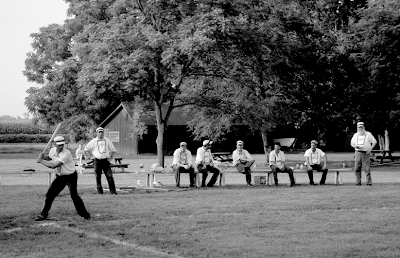Portuguese food is for remembrance. It is for when grandmothers bake Massa Sovada (sweet bread) and cover the rising dough with the sweaters of husbands and sons. I can still smell the warm yeasty aroma that filled the kitchen as my grandmother Delphina made her bread in the traditional way…heavy with memory.
I retrieved the photograph below from an earlier blog, it fits here so well . Rosalina Semas, a grandmother kneading her bread in her summer kitchen at her home on Floral St. She exemplifies all our grandmothers who would spend the day in bread making, especially at Easter. At Eastertime, there would be a hardboiled egg baked into the top of one of the breads.
Elegant in its simplicity, Portuguese food seeps into your soul. Even the poorest had access to fish, beans, greens (especially kale), onions, and potatoes. Everyone had a kitchen garden and anyone could grab a pole and go off fishing or digging with their toes for clams at low tide.
What Portuguese child of my era in the Village did not grow up
on Caldo Verde…Portuguese soup?
on Caldo Verde…Portuguese soup?
I have found a version of my own…as I am vegetarian I omit the linguica. Linguica and its spicer cousins (chourico and morcela) was another staple of our culinary culture. As soon as the first spoonful of soup hits my palate I am back in our kitchen on School St. Comfort food like no other for this child of the Village. The smell as it cooks takes me "home." You may call it peasant food,
for me it is the true "soul food" of my people.
What prompted me to write this post was a recent article in the Wall St. Journal which sent me on my on journey to explore my culinary memories. The author, Chef Georges Mendes, called his article…"The Delicious Route to my Culinary Roots." In his New York restaurant he calls his food "Portuguese-inflected.' There were no such fancy titles when I was growing up. He said that all Portuguese food has a base of bay leaves, paprika, garlic and onion simmered in olive oil. I agree with that. I also have to say that in researching this topic, I had to keep stopping as I meandered through all kinds of blogs by Portugeuse cooks as well as those on Pinterest and Facebook. My recipe files are now fuller with recipes waiting their turns for me to try them.
I was so involved that I had to take myself off for a walk to let my memories simmer, as it were. As I walked I started to mentally list all off the foods of my childhood and they came like a litany :
* Favas cooked that very special way (I am still working on that one) especially at Festas.
*Tomatoes, chicken and rice.
*Malsadas: friend dough
*Alentejana : pork and Little Necks.
*Carne de Espeto: meat on a stick
*Stuffed Clams from the P.A.C.C. so spicy you needed water in hand.
* Portuguese bread rolls fresh from the bakery on School St. to soak up your sauce.
Ah, the cod dishes. Bacalhau in all its many variations. For us, my mother made her very own special dish for Christmas Eve. Served with authentic Portuguese rolls in a type of sandwich it went quicker than any dish on the table. Servings were taken home like Christmas presents. She would purchase the wooden boxes of dried cod, spend a whole day and overnight soaking and rinsing the salt off then marinate it in her own special way. Adding black olives and sometimes hard boiled eggs, it would last forever simmered in lots of garlic, sliced olives. My mouth is watering as I write this.
Once, some time ago, we gave a Portuguese themed dinner party. Portuguese wines like Vinho Verde, Portuguese dishes and Fado playing in the background. I dressed in a long black dress with a lacy black shawl….we loved it. Of course, we never dressed that way growing up at the table. Our foods were the staples of our lives. It gathered us together, and does so still today. In my kitchen there is a little Portuguese rooster decorated in that particular way to remind me that my food, even today, is spiced with the memories of my mother's kitchen in the Village.
Portuguese food translates to love of family, food, wine, friendship and hospitality as well as strong and abiding religious beliefs. Bay leaves, for example, were thought to symbolize the Resurrection. For us as children, special foods were cooked at Easter and Christmas. Today, just my husband and I at table, eating a dish like Caldo Verde imbues me with a sense of tradition that feeds more than my body, the way food should. My culinary heritage is a blessing and I am happy to have shared this with you.
Will you share your culinary heritage memories ?
Meantime it is time for supper….
Meantime it is time for supper….
………..
Sources for this article:
-Pinterest for many of the photographs.
-"The Long, Delicious Route to my Culinary Roots" by Chef George Mendes, WSJ Jan. 18-19, 2014.
-http://portuguesecook.wordpress.com/page/3/ The Portuguese Cook's Blog.
-
http://myportuguesekitchen.blogspot.ca/2012/07/caldo-verdecollard-greens-soup.html Thanks to this blog for the photo of Caldo Verde in its traditional bowl.
http://myportuguesekitchen.blogspot.ca/2012/07/caldo-verdecollard-greens-soup.html Thanks to this blog for the photo of Caldo Verde in its traditional bowl.
There are many, many other blogs and websites you can find filled with traditional Portuguese recipes and the history of that food along with how it was spread around the world as Portuguese ships made port in their travels: they brought tea to England, for example…
yes, that is true. Look it up.
yes, that is true. Look it up.




















